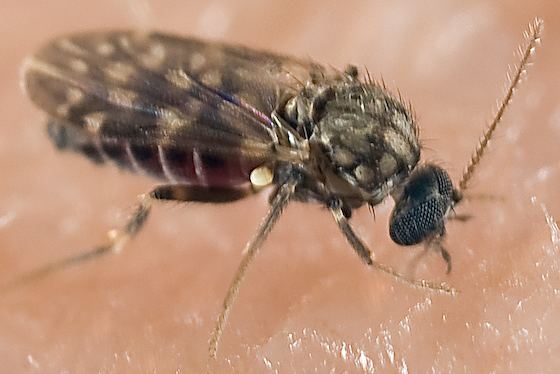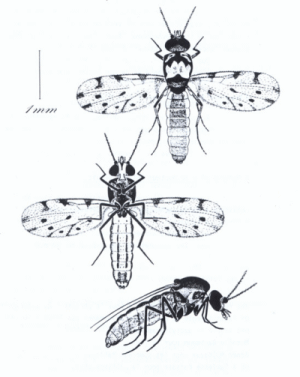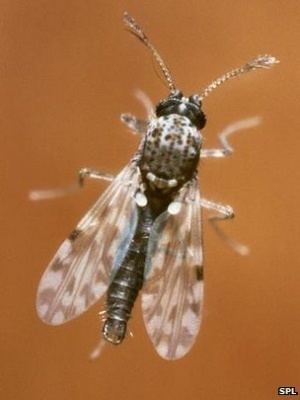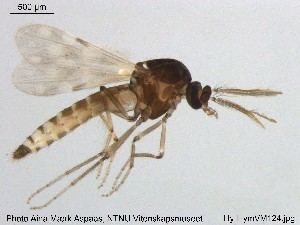Subfamily Ceratopogoninae Scientific name Culicoides Order Fly | Tribe Culicoidini Higher classification Culicoidini | |
 | ||
Similar Sandflies, Highland midge, Fly, Culicoides imicola, Orbivirus | ||
Yajun ma al 2013 a video clip of the biting midge culicoides anophelis ingesting blood from an
Culicoides is a genus of biting midges in the family Ceratopogonidae. There are over 1000 species in the genus, which is divided into many subgenera. Several species are known to be vectors of various diseases and parasites which can affect animals.
Contents
- Yajun ma al 2013 a video clip of the biting midge culicoides anophelis ingesting blood from an
- Identificaci n de culicoides
- Notable taxa
- Taxonomy
- Culicoides as a vector
- Bluetongue vectors in Northern europe
- References

Identificaci n de culicoides
Notable taxa

The systematics and taxonomy of this genus are confused. A large number of species are of unknown relations to those that have been assigned to subgenera already. Furthermore, many subgenera are sometimes elevated to full genus status, or additional genera (such as Paradasyhelea) are included as subgenera herein.

A widely cited, periodically updated, subgeneric classification of species of Culicoides begins with the warning that the traditional approach to classification of species in this genus has led to "phylogenetic chaos". Some of the specific consequences are mentioned, as well as recommendations for future work.

Species incertae sedis include:
Taxonomy

Adults are small dark insects about 1–3 mm long. The antennae are long (15 segments) densely haired in the males and less hairy in females. The thorax is hooped and carries a pair of broad mottled wings. Only the first two longitudinal veins are distinct.
Biological habits: Both males and females feed on nectar, however only the females feed on blood, which is needed for the maturation of fertilized eggs. Females typically bite at dusk or dawn often in dense swarms and usually in the vicinity of water, marshes or rotting vegetation.
Life cycle of Culicoides: Females lay their eggs en masse in a range of habitats ranging from water vegetation, slow running streams, damp soil or manure heaps. These hatch into tiny smooth white larvae with four pairs of anal gills. Pupae consist of a fused cephalothorax with slender respiratory trumpets and a segmented abdomen. Adults emerge through a straight slit after 3–7 days.
The bite of Culicoides is felt as a sharp prick and is often followed by irritating lumps that may disappear in a few hours or last for days.
Culicoides as a vector
Various Culicoides species have been shown to be vectors for the following viruses and conditions: Mansonella spp. (M. ozzardi, M. perstans, M. streptocerca), Onchocerca gibsoni and O. cervicalis, Leucocytozoon, Plasmodium agamae, bluetongue virus, Schmallenber virus, African horse sickness, bovine ephemeral fever (C. osystoma and C. nipponesis), Akabane virus, Queensland itch and Epizootic Hemorrhagic Disease.
Bluetongue vectors in Northern europe
in 2006, bluetongue virus was first recorded in Northern Europe. In 2007 and 2008, there were huge outbreaks, going as far as Norway, but in 2009 the outbreak was smaller. The main vector of the virus in Southern Europe does not live in Northern Europe, so other species have been screened. Species belonging to the Culicoides obsoletus complex and the Culicoides pulicaris complex have been found capable of bluetongue transmission.
